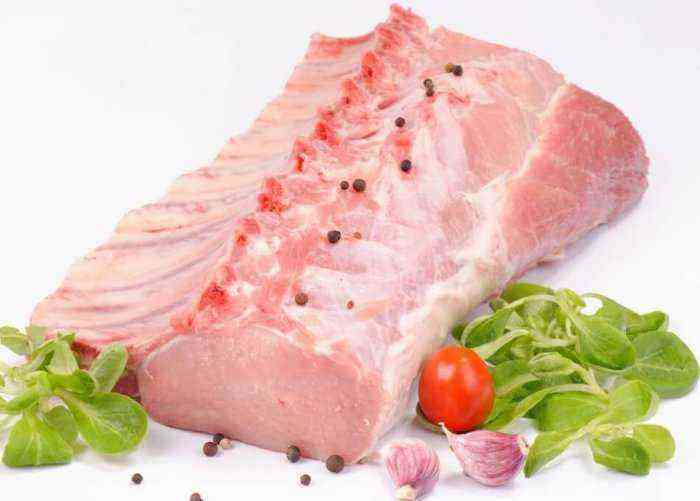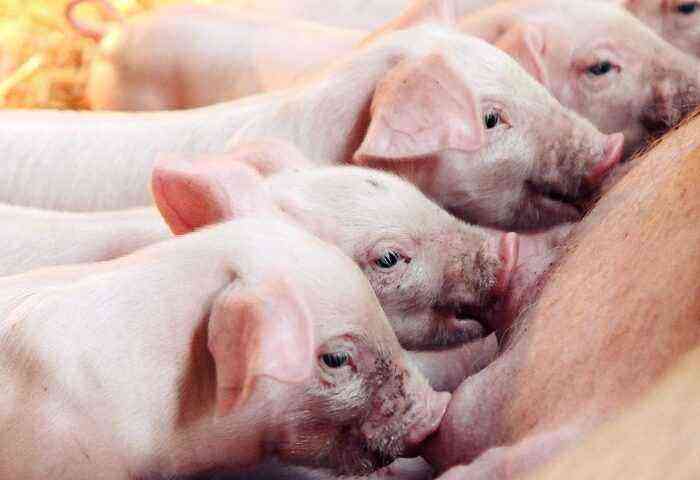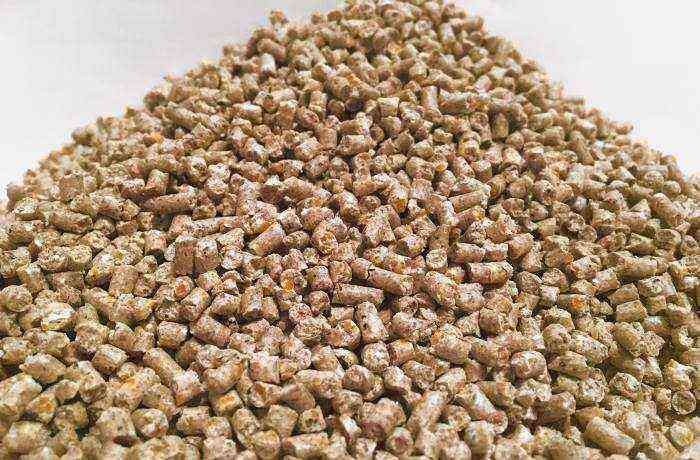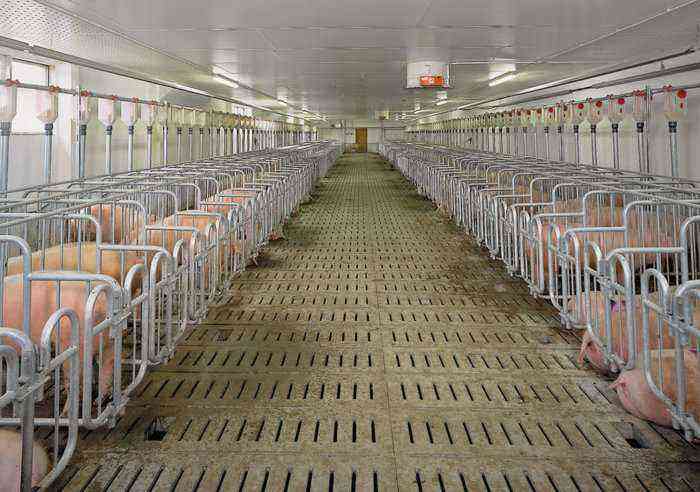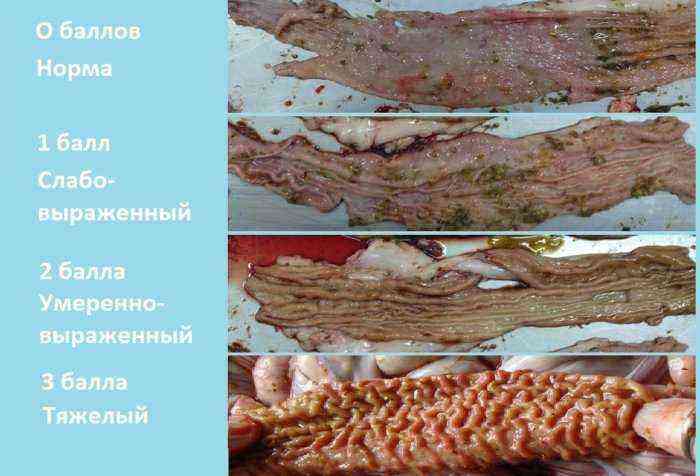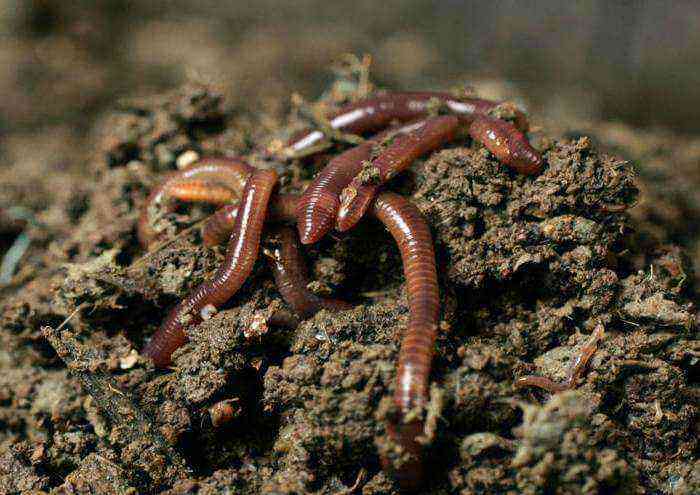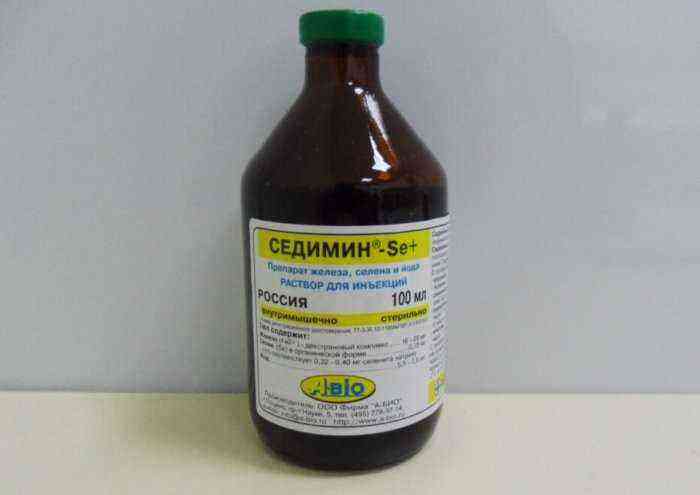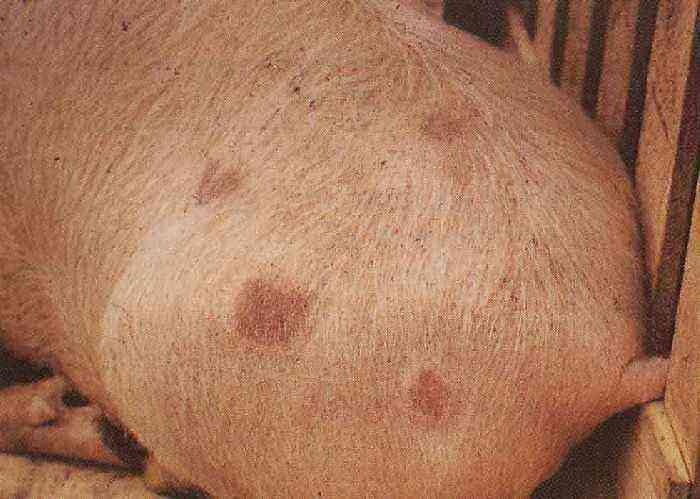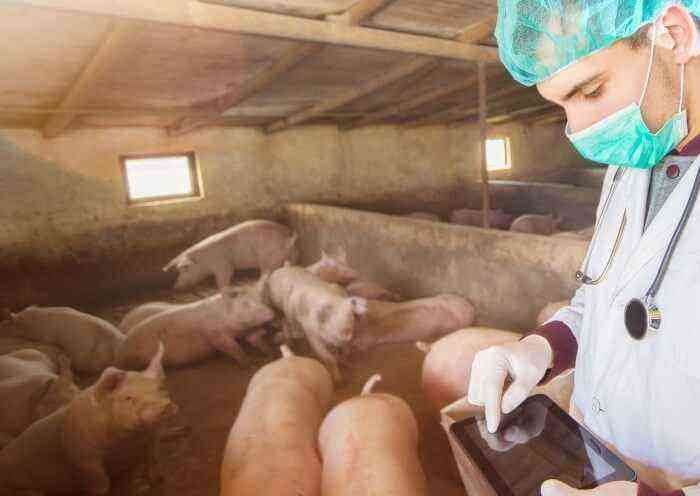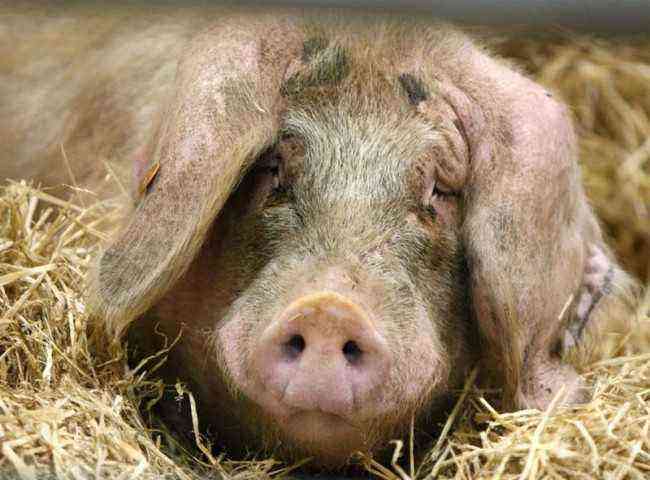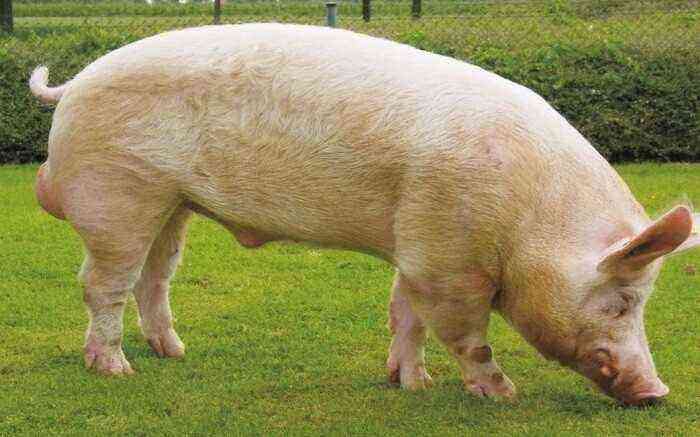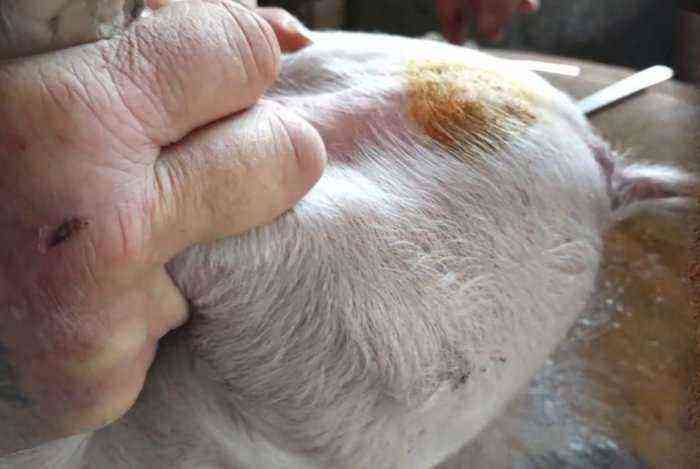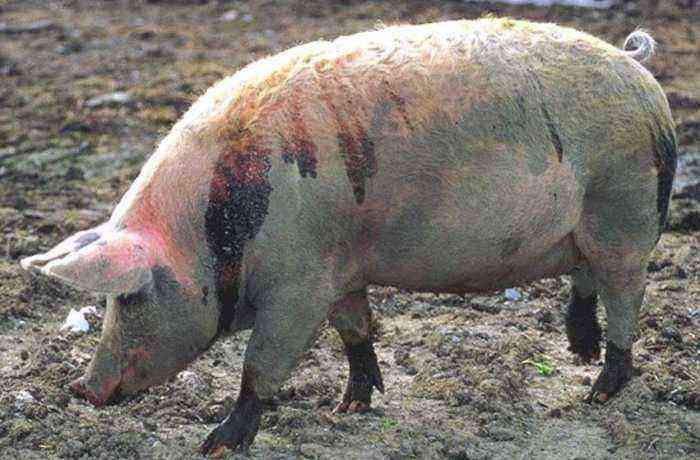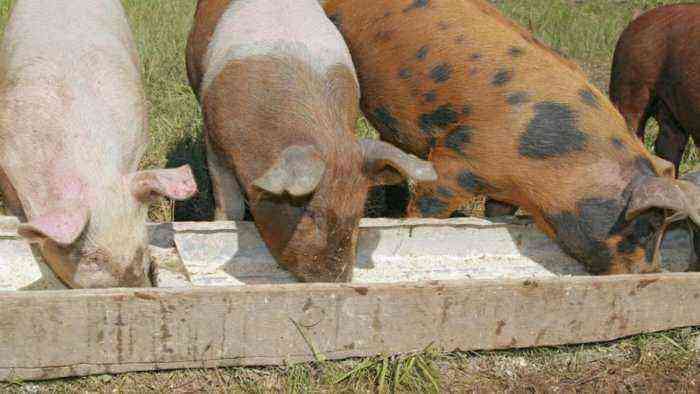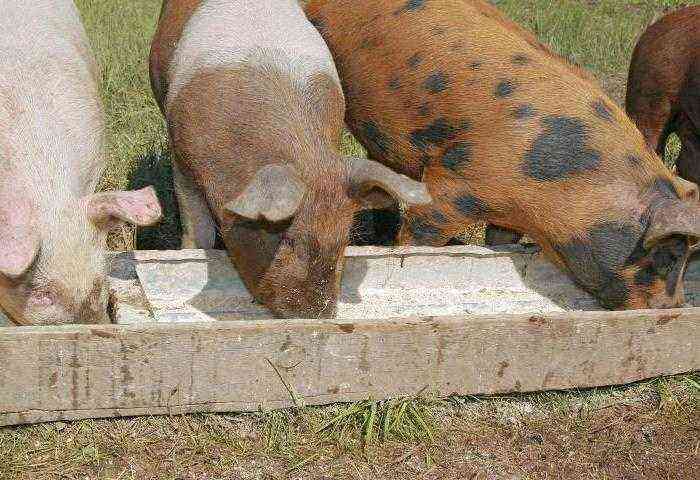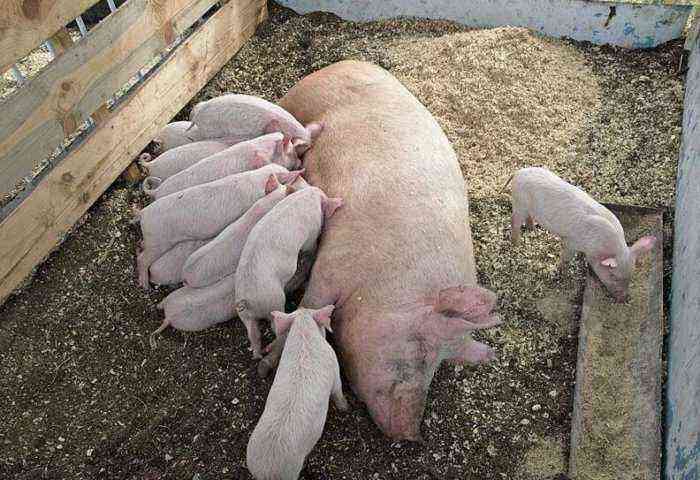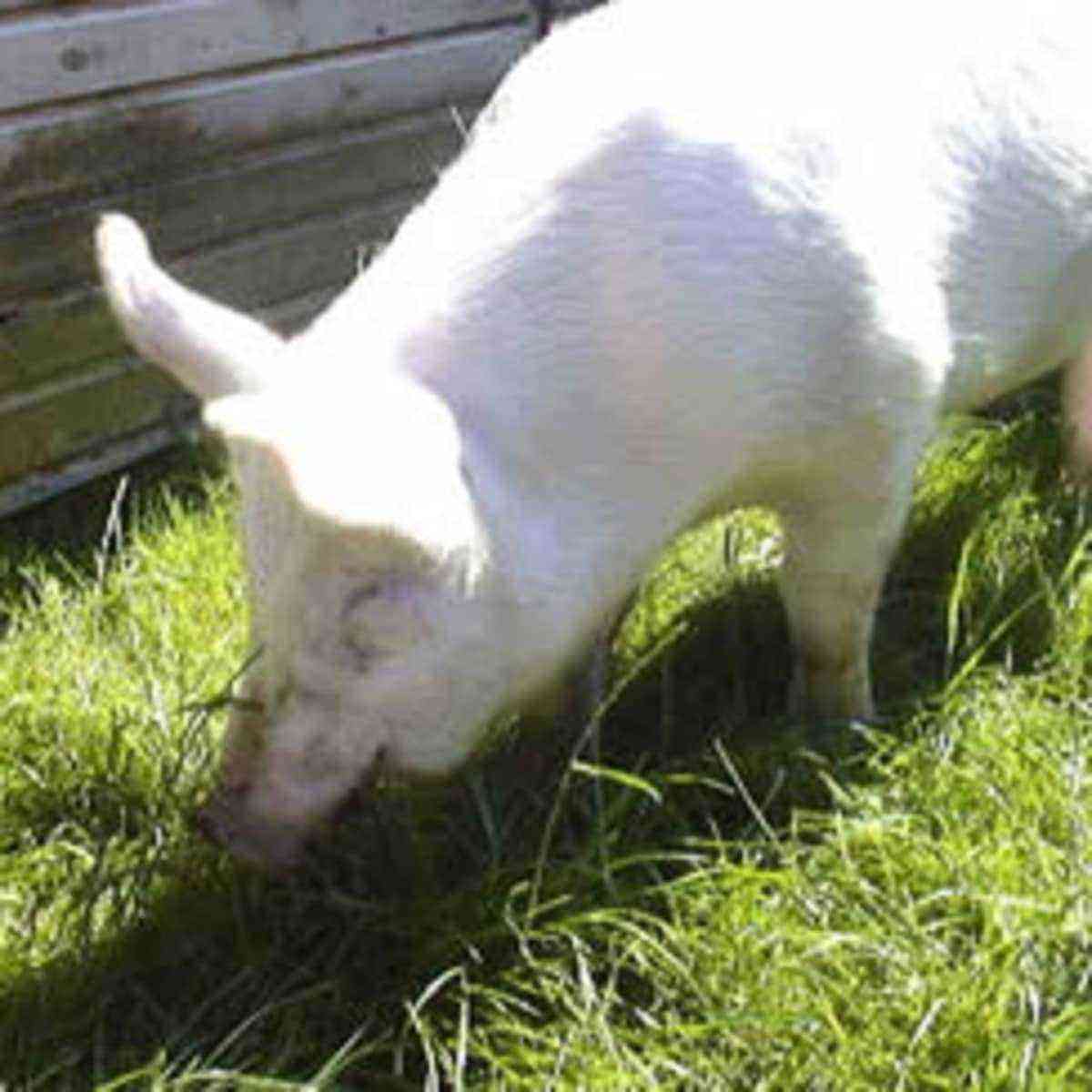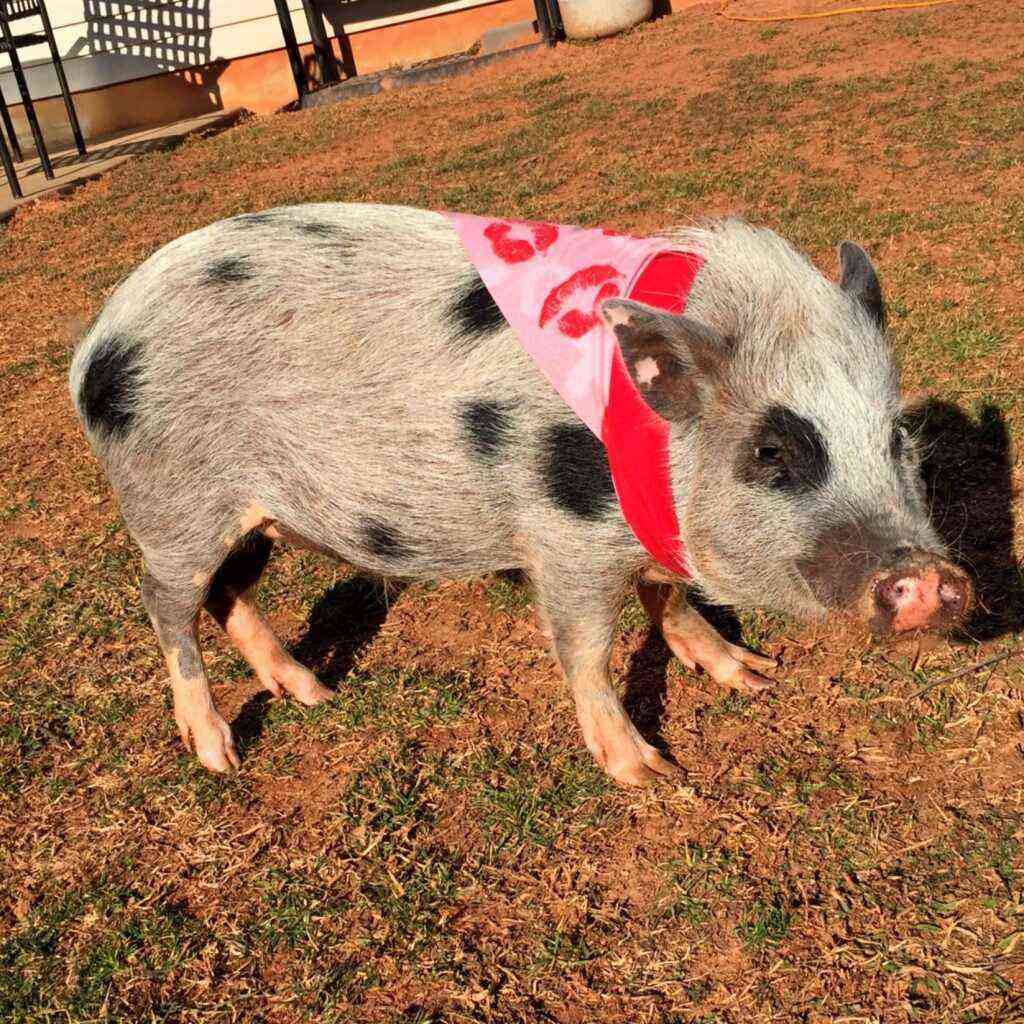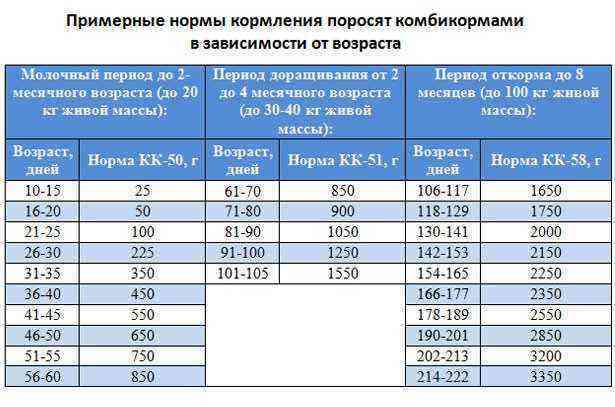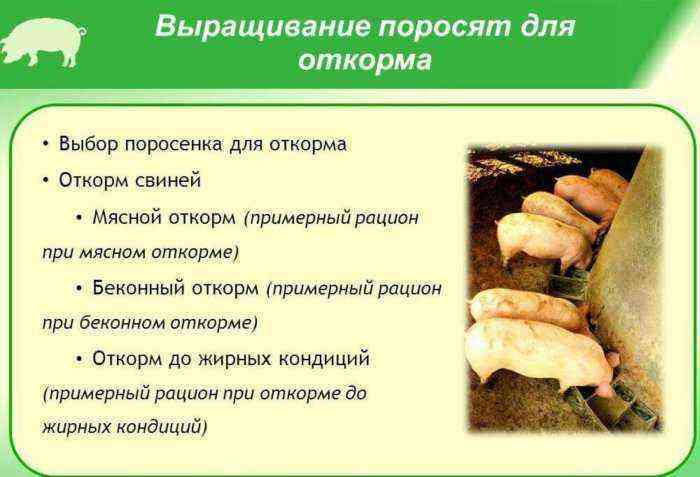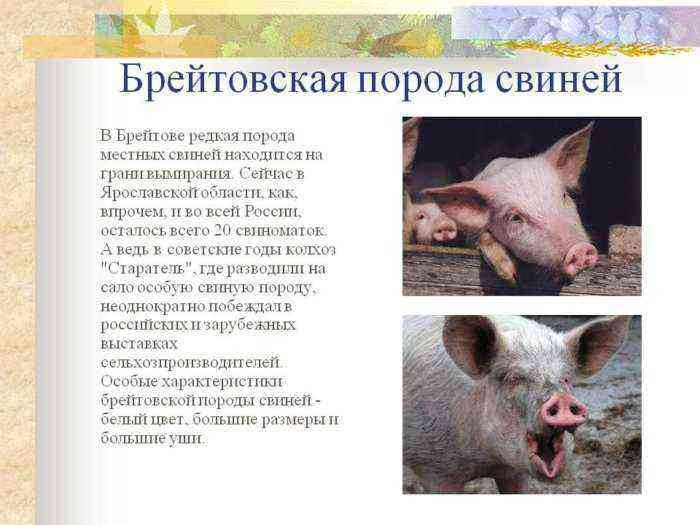Sarcoptic mange of pigs is a parasitic skin disease that is rapidly transmitted to healthy animals from sick ones. If signs of infection are not detected in a timely manner, then the disease will spread to most of the livestock. Piglets are especially susceptible to the disease. What pathogens it is caused by, how it manifests itself, and how to treat it, every farmer should know in order to protect his livestock.
Sarcoptic mange in pigs
What is sarcoptic mange in pigs?
Sarcoptic mange is a skin disease caused by small arthropod parasites that penetrate the epidermis and feed on its cells and interstitial fluid. The causative agent belongs to the genus Sarcoptes suis. Its body is almost impossible to see with the naked eye – its length varies between 0,25-0,5 mm. The body of the tick is flattened and has an oval shape.
Penetrating into the skin of a pig, the mites gnaw holes in it with their mouths, and subsequently the females lay their eggs in them. The larvae hatched from the eggs go through two stages of development, turning first into protonymphs, and then into telenymphs. Mating of females occurs on the surface of the skin in the telenymph stage, after which they occupy a new area of skin, where they lay their eggs. The full life cycle of itch mites lasts about 2 months. During this time, each adult female manages to lay up to 60 eggs.
Arthropod parasites cause severe discomfort to their hosts. They bite, damaging the skin, as a result of which small blisters appear on it. Over time, they burst, and crusts grow in place of the bubbles. The skin becomes thicker. Pigs infected with sacroptosis experience severe itching, they scratch their body. Violation of the integrity of the skin often leads to infection with pathogenic microflora, in which case complications may develop – tissue necrosis, sepsis.
The itch mite cannot remain viable for a long time outside the body of the animal. Depending on external conditions, it dies within 5-15 days. These parasites are unstable to high temperatures – when immersed in water heated to 80 degrees, death occurs instantly.
Attention! Failure to provide assistance to a sick animal can lead not only to a decrease in its immunity and exhaustion, but also to irreversible processes that lead to death.
Causes of appearance
Itchy scabies is transmitted by contact. The source of infection is usually:
- Sick individuals.
- Household items – inventory, clothing of service personnel.
- Rodents (their body may temporarily be parasites).

Rodents can be the source of infection.
During the summer, when the pigs are out in the sun, disease outbreaks are rare, as the ticks are killed by exposure to the sun. In autumn and winter, animals are kept in pigsties, they are in close contact with each other, at this time infection most often occurs. Piglets are most vulnerable to the introduction of the pathogen. Consider the main factors contributing to the spread of the disease:
- Crowded keeping of animals.
- Unsatisfactory conditions in the pigsty – dampness, lack of light, unsanitary conditions.
- Poor quality of animal nutrition.
- Weakened immunity of pigs.
Reference. Pigs that have recently suffered severe infectious diseases are particularly susceptible to itch mite infestation.
Symptoms
Since young animals most often suffer from sarcoptic mange, piglets under the age of one year should be examined for infection as often as possible. Consider the symptoms of the disease:
- Redness of the skin, multiple lesions in the form of a small rash in the eyes, cheeks, ears.
- In adult males, ticks are localized mainly in the scrotum, where the skin is more delicate.
- Itching itch.
- Temperature rise is possible.
- Later, pustules with liquid contents and scratches on the body of sick individuals can be seen.
- In the future, the lesions spread to the neck, back and sides of the pig.
- Reddish-brown crusts form in place of burst bubbles.
- The skin in the places of localization of ticks thickens, forming rough folds.
- Hair loss is observed.
If you start the initial phase of the disease, in the future, ticks will spread throughout the body. In this case, the animal will lose its appetite, exhaustion of the body, anemia will begin. Necrosis of the auricles testifies to the neglect of the process. The disease can take a chronic form or lead to the death of the animal from anemia or sepsis.
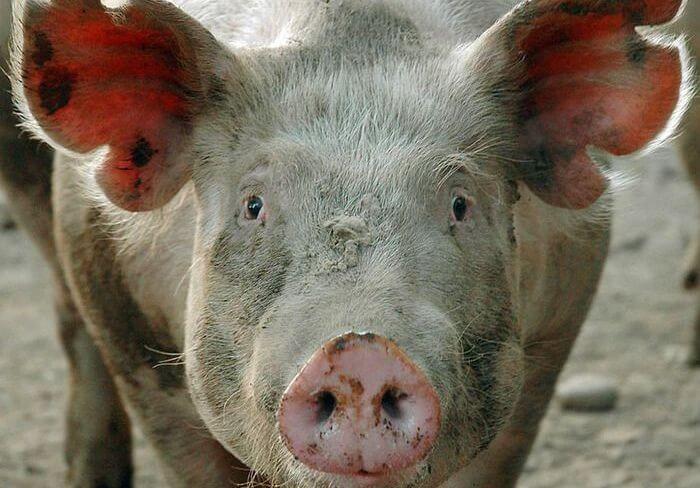
symptomatology
Diagnostics
In making a differential diagnosis, the veterinarian should rule out other skin conditions that resemble sarcoptic mange. These include:
- Various dermatomycosis, including ringworm;
- Eczema;
- Leptospirosis.
In the chronic course of the disease, it may be difficult to make a diagnosis, since ticks in this case remain only in some parts of the body, mainly on the head or neck of the animal. To clarify the diagnosis, it may be necessary to take biomaterial from the lesions. The pig is given a deep skin scraping. The epidermis is then examined under a microscope. Even at low magnification, ticks can be seen.
Treatment
Treatment of sarcoptic mange includes the use of topical preparations for the treatment of the skin and injections of antiparasitic emulsions.
Before starting external processing, it is recommended to wash the body of the animal with warm water and laundry soap. This is necessary to soften rough crusts and remove them. Leather can be cleaned with a brush. After this procedure, they proceed to antiparasitic treatment. Means for external use from sarcoptic mange:
- Chlorophos solution (2%).
- Activated creolin in the form of an emulsion (1%).
- The drug Neostomazan.
- Butox (deltamethrin).
- Cyodrin in the form of an emulsion (0,5%).
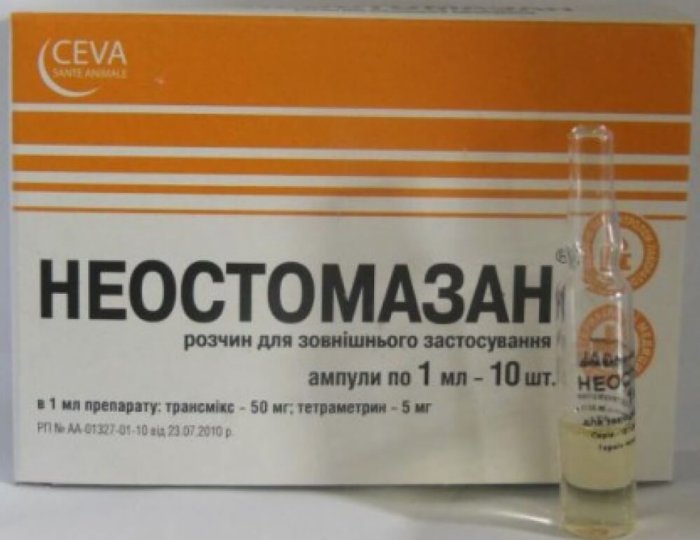
The drug Neostomazan
It is important to properly prepare the treatment solution, for this you need to carefully study the instructions for the selected drug. In it, a clean cloth or a cotton swab is abundantly moistened and lubricated with the places affected by ticks.
Reference. When processing the body of an animal, special attention is paid to the auricles. They need to be abundantly irrigated inside, where ticks can be.
In addition to external preparations, Ivermek injections are also used. Pigs are injected with the drug subcutaneously at a dosage of 1,5 ml per 50 kg of body weight. With a strong spread of parasites, it is recommended to inject again after 8 or 10 days.
Reference. If the pig is being prepared for slaughter, it is necessary to wait 10 days after the end of the treatment.
Prevention
Preventive measures will help to avoid the spread of sarcoptic mange in the farm. All animals that arrive at the farm again must be sent to quarantine. Its duration is 30 days. During this time, any animal health problems are usually discovered.
All pigs on the farm should be inspected in a timely manner, especially young animals. When symptoms of the disease are detected, sick individuals, as well as pigs in contact with them, are treated with acaricidal preparations. The pigsty and all household items are subject to disinfection:
- Feeders.
- Drinkers.
- Inventory.
- Floor.
- The bedding needs to be completely replaced.
Animals are not allowed to leave the farm for 90 days after the last animal has recovered. The quarantine from the farm will be lifted after receiving negative results of laboratory tests for the presence of ticks.
When you notice the first symptoms of pruritic scabies in pigs, immediately start treatment. Do not neglect the processing of healthy individuals that were kept in the same pigsty with the sick. Pay due attention to cleaning the premises, as well as the fight against rodents – they can also become carriers of ticks.



